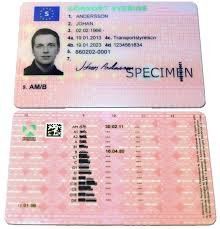
21
апреляThe 3 Greatest Moments In Driver's License For Everyone History
A Driver's License For Everyone
A driver's licence is more than just a piece or plastic. It opens the door to career opportunities, strengthens the family and strengthens the community.
New Yorkers are now able to get a standard license regardless of their immigration status. They must pass the stage of learning Permit and Intermediate License stages, have no convictions for a year and limit passengers to family members of the immediate household for six months.
Permit for Learners
Anyone who wishes to learn how to drive in the United States must first obtain an Learner's Permit. This is a temporary license that allows new drivers to practice driving under supervision. It is issued by the state's department for motor vehicles (DMV). State requirements differ, but in most states a parent or guardian must sign for any person who is less than 18 years old, with a proof of identity and a written test. The majority of DMV offices let you make an appointment. This allows you to complete the process much easier and faster.
Before you can sit for the written exam You will need to show proof of your identity. The majority of people bring their driver's license or certified birth certificate. You might also be required to pass an examination to verify that your eyesight meets the standard for operating a vehicle. The test is usually conducted at the DMV during your learners permit appointment but you can take it körkort guide online at home if your computer has a web camera that meets the minimum requirements.
After passing the written exam You will need to wait for a specific amount of time before being allowed to take the behind-the-wheel test. This gives you the opportunity to practice driving in different situations and increase your confidence. During this time, it is essential that you get as much practice driving as you can, since this will help you prepare for your real exam.
The majority of states require new drivers to be supervised for a specified amount of time while they hold their learner's permits. The research suggests that this requirement reduces crashes and near-crashes by new drivers. Evidence suggests that crash rates are further decreased when teens must hold a learner’s permit for a longer time before they can drive without supervision. (Block & Walker 2008; Mayhew et. al. 2003; Masten et. al. 2018).
You'll also need to complete a five-hour course to get your learner's license in case you are younger than 16 years old. For those who are 18 years old and have completed a driver's education course, this isn't required.
Intermediate License
A teenager in New York who passes the test for driving (which is a little different than the written test you take at the DMV) can be granted an intermediate license. It's not a full driver's license and has some limitations. However, it's an important step to learn how to drive.
Teen drivers are required to pass both written and on-road driving tests before an intermediate license can be issued. The driver must have a permit to learn for at least six months and log at least 50 practice hours. Of these, 10 must be done at night. The driver is not permitted to transport passengers who are younger than 21 unless they are immediate family members, for the first six months of driving on the intermediate license.
The restrictions that apply to an Intermediate License are designed to assist a teenager in gaining experience driving under less risky conditions, while reducing exposure and improving safety. This is an essential part of the graduated driver's license program which was introduced in a number of states to reduce the risk associated with the first driving experience for teenagers.
To move to a full license, the teenager must complete the driver's education program, pass all driver's test and not have any alcohol-related offenses or traffic convictions in the last 12 months. The driver must also hold an intermediate license as well as an accompanying driver at all times.
In addition to these conditions, there are other factors that could affect an individual's ability to get an official license. A person with a severe medical condition like PTSD, autism, or a learning disability could be eligible for a special license in the event that they can show the DMV their disability has a significant effect on their daily life. To be granted an exemption from these rules typically requires taking an additional class and passing the driving test. A person who wants to obtain an endorsement for a motorcycle or HGV must also take a knowledge test and sometimes a driving test.
Restricted License
A restricted license is a type of driver's license that permits you to drive only for körkort framtagning flexibelt (simply click the following webpage) specific reasons. These licenses are usually offered to people who have had their driving privileges suspended or removed. The purpose of these licenses is to allow the driver to continue working as a driver for children to and from school or activities and to attend alcohol education programs or counseling as well as fulfill court-ordered community services obligations, and attend medical appointments. The details of these licenses differ by state. In New York, you can only get a restricted license after a period of "hard suspension" (typically 30 days). After that, you must complete an approved DUI program, submit proof of insurance and install an ignition interlock device (IID) in your vehicle.
It is essential to be aware of the limitations of your particular restricted license because the moment you exceed the limits, it could result in additional fines, or further suspension of your driving privileges. You should immediately contact an experienced New York DUI lawyer to discuss the advantages of a restricted or conditional license if your international driver's license licence is suspended.
It isn't easy to run essential errands, complete your daily tasks and take your children to and from their activities if you lose your driving privileges. It is not uncommon to ask someone else to drive you, which can be a burden on your family and friends. A restricted or conditional license could provide an answer to this issue and allow you to drive yourself or transport others to essential tasks such as getting to work and back, running errands, grocery shopping, and attending crucial appointments. The restrictions on this type of license will vary by state, but they are typically designed to prevent pleasure driving and driving to social or recreational gatherings. In certain states these licenses are known as occupational or hardship driver's licenses. Some of these licenses require that you complete DUI programs or counseling, and submit an SR 22 form, which is proof of your car insurance coverage.
Full License
In the US, and perhaps in other countries, drivers under 18 years old are usually legally required to follow an accelerated licensing system. These programs are referred to by different names, but all serve the same purpose -- to allow young drivers to develop their driving skills gradually and demonstrate their safe driving abilities in low-risk environments. The typical process starts with a learner permit and progresses to restricted licenses or a probationary licence. This kind of license could be restricted, for example, the times of the day that driving is prohibited and/or a limit on passengers.
After a time when the driver is accident and free of points, they are able to upgrade to a full license. This usually happens at the time of renewing their learner's permit. A card with attachments is issued to show this change in status. Normally the full license is able to remove the limitations on the time of day and limits on passengers, but some restrictions remain in effect until the driver reaches the age of 18.
If a driver meets all the requirements necessary to get the full license (which can include having taken a driving course and being accident-free and without points for a period of six months) They may be given a license that has the words "Full License" on it. The license will also stipulate that the driver must always be accompanied on the road by a licensed driver (non GDL probationary driver) who is at least 21 years old. The only exception to this requirement is that the driver has to be driving to and from school, work, or fire department or emergency/ rescue squad events if they are members of.
 Certain states near the northern border offer enhanced licenses that include a regular driver's license with the requirements of a passport card. This permits the holder to travel north into Canada or Mexico, although air travel requires a standard passport book.
Certain states near the northern border offer enhanced licenses that include a regular driver's license with the requirements of a passport card. This permits the holder to travel north into Canada or Mexico, although air travel requires a standard passport book.
It can be confusing for new drivers to know the differences between the various types. It is crucial for drivers to know these classes, whether they plan to cruise down Broadway in a sedan or drive a big truck in the Adirondacks.
___name___
___time______content___